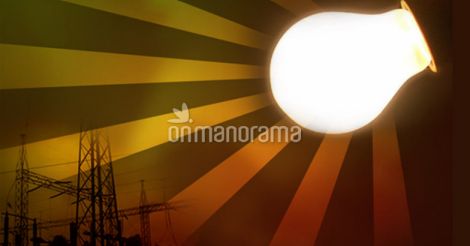“Water, water everywhere, nor any drop to drink.” These lines from ‘The Rime of the Ancient Mariner,’ by Samuel Taylor Coleridge used to describe a situation in which someone is in the midst of plenty but cannot partake of it and it holds true for the grave power crisis in Kerala at present.
People are being put to severe hardships due to major power outages, unscheduled load-shedding, and regular day-time power cuts in many parts of the State. Normally, we tend to believe that the KSEB’s inability to match production of electricity with the growing demand could be the reason behind this crisis, but, surprisingly, the root cause lies somewhere else.
The reservoirs of the Kerala State Electricity Board (KSEB) have sufficient water storage to sustain the power generation and meet the full demand, but the State’s power generation continues to be alarmingly grim to meet the growing energy needs.
Power use in the State during the daytime is around 3,500 mw per day, while the demand goes up to around 3,900 mw during the peak hours between 6 p. m. to 11 p. m. If issues such as low voltage and power outages are rectified, the demand would cross the 4,000-mw (80 million units) mark.
On an average, the KSEB generates around 4,200 mw for daily consumption. It is in addition to the high-cost electricity generated at the thermal plants at Brahmapuram, Kayamkulam, and the Reliance Energy's BSES plant in Kochi.
The generation of power within the state, excluding power from non-KSEB sources, is hovering around 1,700 mw while allocation from the Central pool to the State is around 1,300 mw.
Also 700 mw and 300 mw of power flow into the grid from outside the state under medium and long-term power purchase agreements, respectively, with power suppliers in other States. In addition to the daily generation of 100-200 mw of power from energy exchanges, the KSEB is accessing 100-150 mw through unscheduled interchanges (UI), thus taking the total volume to 4,200 mw.
The state has been setting new records in power consumption with the daily consumption reaching 77.85 million units from the average of 70 million units during the corresponding period a year ago.
Still the hydel reservoirs in the state have sufficient water storage to generate about 1,300 million units of power. The total power generation from the 39 hydroelectric power plants was estimated at 7,400 million units.
The KSEB has cut down its production to 18-19 million units after taking into consideration the supply capacity of the Central and open market systems feeding the State.
If that is the real situation, why can't the KSEB avert major power outages and withdraw load-shedding completely? It points fingers at our poor transmission and distribution system, which leads to a very high transmission and distribution loss.
Most of the sub-stations, transmission lines, distribution transformers and 11kv lines are ill-equipped, resulting in frequent power failures due to overloading.
There are only 34 sub-stations in the entire state that have managed to withstand heavy loads and complete five years. When compared with the data for the previous five years, the numbers are less than half of the above-mentioned figures. The situation is more or less similar on the distribution front as well.
A comprehensive action plan should be drawn up to rectify the discrepancies in the transmission distribution system. Notably, the Centre was quick to act to upgrade the intra-State networks for smooth flow of electricity.
Unfortunately, there is no special concern or attention being paid to this grave issue in election manifestos of our political parties.
(The author, a retired senior executive engineer, is the former general secretary of the KSEB Officer’s Association)

























